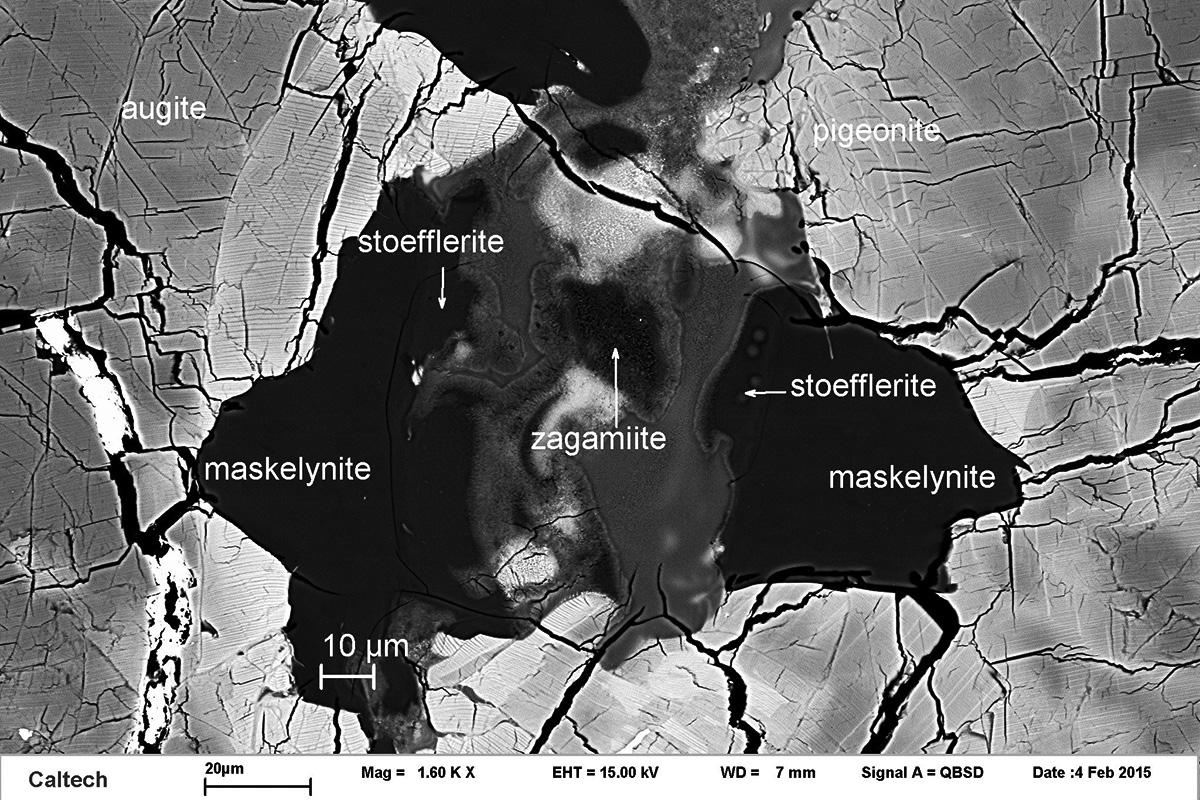One of the main research topics at the Natural History Museum of Berlin is devoted to impact cratering processes and meteorites. Impacts of cosmic bodies are strongly influencing the formation and evolution of the Earth and of life. The new mineral “stöfflerite” is named after the former Director of the Natural History Museum, Dieter Stöffler, one of the internationally well-known impact and meteorite researchers. “There are only a few thousand minerals, and we are proud not only that the Museums für Naturkunde’s internationally renowned scientists are honoured (by minerals bearing their name), but also that research at the Museum is brought to public attention, fostering enthusiasm for nature”, says Director General Prof. Johannes Vogel
Prof. Oliver Tschauner (University of Nevada, Las Vegas) and Prof. Chi Ma (California Institute of Technology, Pasadena) discovered the mineral stöfflerite in a meteorite that was ejected from Mars and landed in Morocco where it was found in 2001. The meteorite is a volcanic rock (basalt) which consists mainly of the minerals feldspar and pyroxene.
The basaltic meteorite displays effects of very strong pressure and temperature. An estimated pressure of 400 thousand to 500 thousand atmospheres and a temperature of more than 1500 °C transformed the feldspar crystals into glass. The transformation of feldspars into an amorphous state, which is called diaplectic glass or maskelynite in the case meteorites, has been observed in many rocks of terrestrial impact craters as well as in meteorites originating from asteroids, the moon or from Mars. This transformation is accompanied by the formation of high-pressure minerals. So far, the minerals lingunite, a high-pressure from of the sodium feldspar albite (NaAlSi3O8) and liebermannite, a high-pressure form of the potassium feldspar orthoclase (KAlSi3O8) are known. The newly discovered stöfflerite represents a high-pressure form of the sodium-calcium feldspar plagioclase (mixed crystals of NaAlSi3O8 - CaAl2Si2O8 composition). The stöfflerite crystals are extremely small, i.e. in the micrometer size range because they crystallized under dynamic pressure conditions in a very short time. This process is called shock metamorphism. It is characteristic of impact craters. It appears highly probable that the minerals lingunite, liebermannite, and stöfflerite do also occur in terrestrial impact craters such as the Ries crater, the famous impact crater near Nördlingen in Southern Germany, a crater with a diameter of 26 km. A group of scientists from the Natural History Museum Berlin is working in the Ries since many years and will now start to search for stöfflerite there.
